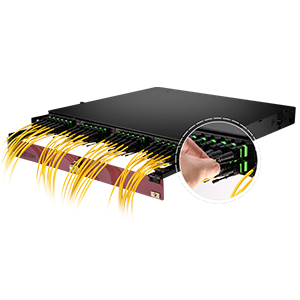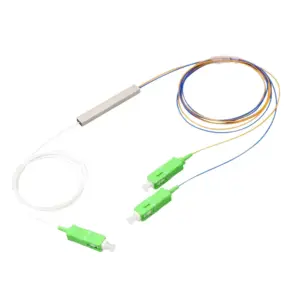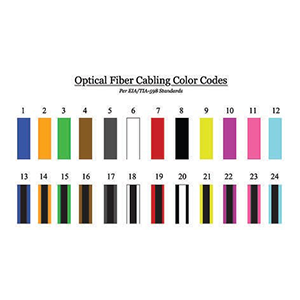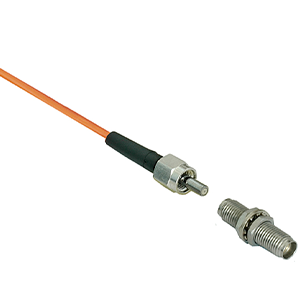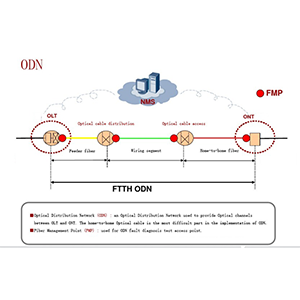Routers play an important role in home and enterprise networks. This article will explore whether ONUs (Optical Network Units) can replace routers. We will first define the role of ONUs in FTTH networks and explain their main functional features. Next, we will explain the main functions of routers in the network and introduce their wide application in home and enterprise networks.
After that, we will compare the differences between ONUs and routers in network layer forwarding, security protection, advanced functions, flexibility and scalability. We will also compare the cost and deployment factors of the two. Finally, we will analyze the impact of technology development trends on ONU replacing routers and look forward to the future integration of ONUs and routers.
Basic functions of ONUs (Optical Network Units)
Optical Network Units (ONUs) play a key role in Fiber To The Home (FTTH) networks. The following is a detailed introduction to the basic functions and main features of ONU:
The role of ONU in FTTH network
Optical signal reception and conversion:
- The main function of ONU is to convert the optical signal from the optical line terminal (OLT) into an electrical signal for home or business users.
- It is responsible for receiving and converting the optical signal sent by OLT into an electrical signal for the user’s equipment (such as computers, TVs, phones, etc.).
Electrical signal transmission:
- ONU is also responsible for converting the electrical signal generated by the user’s terminal equipment back to an optical signal and sending it back to the OLT. In this way, the data sent by the user can be transmitted to other users or Internet service providers through the optical fiber network.
Data distribution:
- ONU distributes the optical signal received from OLT to each user port so that each user can receive the corresponding data stream.
Interface conversion:
- ONU provides different interfaces, such as Ethernet interface (RJ45), POTS interface (for telephone) and other service interfaces to meet the various needs of users.
Main functions and features of ONU
Optoelectronic conversion:
- ONU has the function of optoelectronic conversion, converting optical signals into electrical signals (and reverse conversion) to support different types of user equipment and services.
Bandwidth Management:
- ONU supports bandwidth management and QoS (Quality of Service) functions, which can dynamically adjust bandwidth allocation according to user needs and network load to ensure network performance and user experience.
Support Multiple Services:
- ONU can support multiple services, including data, voice and video services. For example, it can provide high-speed Internet access, VoIP telephone services, and high-definition TV services.
Intelligent Management:
- Modern ONUs usually support remote management functions, allowing operators to configure, monitor and troubleshoot ONUs through the network without on-site intervention.
High reliability and stability:
- ONU design focuses on high reliability and stability, and usually has redundant power supplies and other fault recovery mechanisms to ensure service continuity and stability.
Flexibility and scalability:
- ONU usually has strong flexibility and scalability, supports a variety of network topologies and user needs, and can adapt to FTTH deployments of different scales and types.
Security:
- ONU supports a variety of security mechanisms, such as data encryption and user authentication, to protect user data and privacy.
Through these functions, ONU plays the role of a bridge connecting the optical fiber network and the user-end equipment in the FTTH network, ensuring that users can enjoy stable, high-speed Internet services and other value-added services.
Typical functions and application scenarios of routers
The router is a very important part of network equipment, and it plays a vital role in connecting and managing network traffic. The following details the typical functions and application scenarios of routers.
Main functions of routers in the network
Packet forwarding:
- The core function of a router is to forward packets from the source network to the destination network. It checks the destination IP address of the packet and determines the best transmission path for the packet based on the routing table.
Network Address Translation (NAT):
- A router can perform Network Address Translation (NAT), mapping private IP addresses to public IP addresses, so that multiple devices can share a public IP address to access the Internet. This is very common in home and small business networks.
Dynamic Routing:
- The router supports dynamic routing protocols such as RIP (Routing Information Protocol), OSPF (Open Shortest Path First), and BGP (Border Gateway Protocol), which can automatically adjust the path according to the network status to ensure that the data packet reaches the destination through the optimal path.
Firewall and Security Management:
- The router usually integrates firewall functions, which can filter unsafe traffic, block unauthorized access, and protect the network from various network threats.
Wireless Access Point (WAP) Function:
- In homes and small offices, many routers also integrate wireless access point functions, providing Wi-Fi connections, allowing wireless devices to easily access the network.
Traffic Management and Bandwidth Control:
- The router supports traffic management functions, which can allocate bandwidth according to priority to ensure the normal operation of key applications (such as VoIP, video conferencing, etc.) and avoid network congestion.
VPN Support:
- The router can support virtual private network (VPN) functions, allowing users to securely access remote networks through encrypted tunnels, which is especially important in enterprise environments.
Load Balancing:
- Some advanced routers support load balancing, which can distribute traffic among multiple network connections to optimize network performance and improve reliability.
Wide Application of Routers in Home and Business Networks
Home Network:
- Internet Sharing: Routers are mainly used in home networks to connect multiple devices in the home to the Internet. Through the NAT function, all home devices (such as computers, smartphones, smart TVs, etc.) can share a public IP address to access the Internet.
- Wi-Fi Access: Home routers usually provide Wi-Fi functions, allowing wireless devices to connect to the Internet anywhere in the home.
- Parental Control and Network Security: Some home routers provide parental control functions, allowing parents to manage their children’s online time and access content. At the same time, home routers also provide basic firewall functions to protect home networks from external threats.
Small business network:
- Network interconnection and resource sharing: Routers help small businesses connect multiple offices or departments, allowing the sharing of resources such as files and printers.
- Network security: In small businesses, the firewall function of routers is used to prevent unauthorized access and protect the security of sensitive data.
- VPN access: Small businesses often use the VPN function of routers to allow employees to remotely access the company network through a secure connection, which is especially important in remote office scenarios.
- Traffic management: Through the traffic management and bandwidth control of routers, small businesses can ensure that the bandwidth needs of important business applications are prioritized and maintain the efficient operation of the network.
Large Enterprise Networks:
- Management of Complex Network Architectures: In large enterprises, routers are used to manage complex network architectures that connect multiple branch offices, data centers, and external networks. They often support multiple dynamic routing protocols to keep the network running efficiently.
- Advanced Security Measures: Enterprise routers provide more complex and advanced security features, such as deep packet inspection, firewall policies, and intrusion detection and prevention systems (IDS/IPS).
- Multi-path Routing and Redundancy: Large enterprises often use routers with load balancing and redundancy features to ensure high availability and fault tolerance of the network.
Through these features and applications, routers play a vital role in home, enterprise, and network environments of all sizes, ensuring the stability, security, and efficiency of network connections.
Can ONU replace routers?
Network layer forwarding
Differences between ONU and router in network layer forwarding function:
- ONU: Optical network unit (ONU) is mainly used to receive and send optical signals, connecting optical fiber network to user equipment in home or enterprise network. The forwarding function of ONU is mainly concentrated in the transmission layer. It can perform simple forwarding functions within the home or local network, but it does not have the complex network layer forwarding capabilities of routers.
- Router: Routers focus on the work of the network layer. They analyze the IP address information of the data packet, determine the transmission path of the data packet, and forward data between different networks. Routers can handle complex routing tables, dynamic routing protocols, and support multi-path redundant routing.
Can ONU completely replace the network layer function of the router:
- No: Since ONU is mainly designed for fiber access, its network layer function is very limited and usually only handles simple local network connections. Routers have complex network layer functions and can efficiently forward data packets between multiple networks. Therefore, ONU cannot completely replace the network layer function of the router.
Security protection
Advantages of routers in security protection:
- Routers usually have firewall functions that can filter unsafe data packets, block unauthorized access, and protect the network from various threats. In addition, routers can also support VPN (Virtual Private Network) and Deep Packet Inspection (DPI) to enhance network security.
Does the ONU provide equivalent security protection capabilities:
- Partially, but generally insufficient: Some advanced ONU devices may integrate basic firewalls and simple security features, but these features are often more limited than dedicated routers. Therefore, ONU cannot completely replace routers in terms of security protection, especially in enterprise environments that require advanced security policies and configurations.
Advanced Features
Advanced Features Provided by Routers:
- Load Balancing: Routers can distribute traffic among multiple Internet connections to improve network performance and reliability.
- Dynamic Routing Protocol Support: Routers support dynamic routing protocols such as OSPF and BGP to automatically select the best path.
- QoS (Quality of Service) Management: Routers can prioritize bandwidth allocation according to the needs of different applications to ensure the performance of key applications.
- VPN Support: Routers usually support VPN functions to provide remote secure access.
Does the ONU have these advanced features:
- Limited: Although some high-end ONUs may have some routing functions, such as simple QoS or bandwidth management, in general, ONUs lack the comprehensive advanced functions provided by routers. This makes ONUs unable toReplacement of routers in complex network environments.
Flexibility and scalability
Differences between ONU and router in flexibility and scalability:
- Router: Routers are highly flexible and scalable, supporting multiple network configurations, complex routing protocols, and multiple network interfaces to meet network requirements of different scales.
- ONU: ONU has relatively low flexibility and scalability, and is usually designed to meet specific access requirements and lacks flexibility in complex network environments.
The impact of these differences on applications:
- Application scenarios: In environments that need to handle complex network structures or require multi-function support, the advantages of routers are obviously more prominent. ONU is suitable for scenarios with single access and simple network requirements.
Cost and deployment
ONU and router procurement and deployment cost comparison:
- ONU: Due to its functional specificity and relatively simple configuration, ONU procurement and deployment costs are generally lower, suitable for home or small business environments with fiber access.
- Router: Routers may cost more, especially in enterprise-level applications, because they support a wider range of functions and more complex network configurations. Deploying routers may also require more expertise and time.
The impact of cost factors on selection:
- Cost-oriented selection: For users with limited budgets and simple functional requirements, choosing an ONU plus a simple router or directly using an ONU with simple routing functions may be a more economical solution.
- Function-oriented choice: For enterprises or advanced users who need advanced network functions, high security and high flexibility, investing in more powerful routers is necessary, even if it means higher initial costs.
Although ONU can partially replace the functions of routers in specific scenarios, it cannot completely replace the role of routers in network layer forwarding, security protection, advanced functions, flexibility and scalability. For environments that require complex network management and advanced functions, routers are still indispensable equipment.
Possibility of ONU replacing routers and future development
The impact of technological development trends on ONU replacing routers:
(1) Integrated development:
- ONU is moving towards integration and gradually integrating more network function modules.
- Future “smart ONU” may have more advanced functions such as stronger routing, security, and quality control.
- This helps to narrow the functional gap between ONU and router and improve the substitutability of ONU.
(2) Cost advantage:
- As a standard user terminal for large-scale deployment, ONU has a lower production cost and has obvious advantages.
- With the scale effect, the deployment cost of ONU is expected to be further reduced.
- This may make users prefer to adopt integrated ONU solutions instead of independent routers.
(3) Simplified network architecture:
- With the widespread deployment of optical fiber access networks, ONU will become a key access device on the user side.
- The network architecture centered on ONU can simplify the network topology and reduce the complexity of deployment and management.
- This may accelerate the application of ONU to replace traditional routers on the user side.
Future integration of ONU and router:
(1) Functional integration:
- In the future, ONU may integrate more advanced functions such as routing, security, and quality control.
- Routers may also develop in the direction of ONU, integrating basic functions such as photoelectric conversion and interface adaptation.
- The functional boundaries between the two will become blurred, achieving deeper functional integration.
(2) Architecture optimization:
- The network architecture based on ONU can simplify the network topology and improve efficiency.
- This ONU-centered architecture may gradually replace the traditional independent router architecture.
- Router functions can be decentralized to ONU or centralized to the network center node to achieve unified management.
(3) Flexible deployment:
- As ONU functions continue to increase, they may replace routers more frequently in the future.
- However, in some scenarios that require stronger functions and scalability, independent routers will still retain their place.
- ONUs and routers may be flexibly deployed according to different application requirements to achieve functional division of labor.
Although ONUs do not yet have the ability to completely replace routers, with the advancement of technology, especially in integration, hardware performance improvement, SDN/NFV technology and intelligent network management, the possibility of ONU gradually replacing some router functions is increasing. In the future, we may see ONU and router fusion devices become mainstream, especially in home and small and medium-sized enterprise network environments. This fusion will make network equipment simpler and smarter, and can provide more comprehensive and efficient network services.
Summary
Routers are indispensable key devices in home and enterprise networks. Although ONU has the potential to replace routers in some aspects, there are still gaps in network layer functions, security protection, advanced functions and flexibility. Our company has long focused on the research and development of high-performance routers and ONUs and has rich practical experience.
We provide a variety of home and enterprise-level router products, which are at the industry-leading level in terms of reliability, security and feature richness. At the same time, we also provide high-performance ONUs to provide FTTH network users with a high-quality Internet experience. Our team of engineers will provide you with professional selection guidance and technical support to ensure that the selected equipment performs at its best in actual applications. Contact us now to learn more.
Optical Network Unit FAQ
An Optical Network Unit (ONU) is a device that converts optical signals from a fiber-optic network into electrical signals that can be used by other devices. A router, on the other hand, directs data packets between networks and manages local network traffic.
Generally, an ONU cannot replace a router entirely because it does not have the routing capabilities required to manage and direct network traffic. It typically works in conjunction with a router.
An ONU’s primary function is to interface with a fiber-optic network and convert optical signals to electrical signals for devices on a local network. It may also include basic network management functions.
A router manages network traffic, assigns IP addresses, and connects multiple devices within a local network to the internet. It also provides features such as NAT (Network Address Translation), firewall protection, and wireless connectivity.
Some ONUs come with integrated routing features, often referred to as an ONT (Optical Network Terminal) with routing functionality. However, these are not as feature-rich as dedicated routers.
In most setups, you will need both an ONU and a router. The ONU connects to the fiber-optic network, and the router manages your internal network and internet connectivity.
Yes, you can use a standalone router with your ONU. The ONU connects to the router via an Ethernet cable, and the router manages your local network and internet connection.
If your ONU lacks routing capabilities, you should connect a separate router to the ONU to handle network traffic and provide wireless connectivity.
An ONU with integrated routing can simplify your setup by combining the functions of both devices into one. However, dedicated routers often provide more advanced features and better performance.
Check the specifications or user manual of your ONU. You can also contact your internet service provider (ISP) for information on whether your ONU includes routing features.


